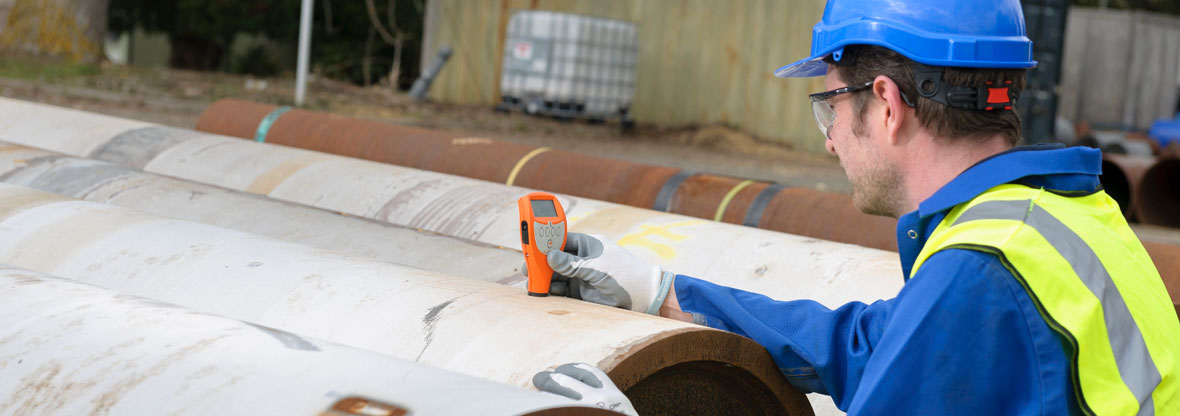Pipeline Welding Inspection: Crucial Steps for Reliable Pipeline Construction
Comprehending the Fundamentals of Pipeline Welding Assessment: Important Variables for Examining Weld High Quality and Fighting Failures
In the realm of pipe welding inspection, the stakes are undoubtedly high, demanding an extensive understanding of basic principles to make certain weld quality and alleviate failing risks. Different essential elements come right into play, including the option of suitable materials, the application of innovative inspection methods, and the recognition of common welding flaws.
Relevance of Weld Quality
The integrity of a pipeline is essentially dependent on the high quality of its welds, making weld top quality a crucial aspect in making certain efficient and safe operation. A pipeline weld acts as a junction point where materials are joined, and any deficiencies in this area can result in considerable structural weaknesses. Poor bonded high quality can cause leaks, tears, and devastating failings, posing serious safety and security threats and ecological dangers.
A number of aspects add to the top quality of a weld, including the option of welding procedure, the skills of the welder, and the problems under which the welding is done - Pipeline Welding Inspection. Insufficient preparation, inappropriate warm input, and contamination can compromise weld stability, resulting in problems such as porosity, insufficient blend, or cracks. For that reason, rigorous quality assurance measures need to be applied throughout the welding process to mitigate these dangers
Furthermore, the long-lasting performance of a pipe is heavily influenced by the resilience of its welds. Top notch welds not only boost the overall strength of the pipe yet additionally expand its life span, decreasing the demand for pricey repair services and downtime. Therefore, ensuring exceptional weld top quality is paramount in pipe layout and maintenance practices.
Secret Evaluation Techniques
Making certain weld quality requires the implementation of efficient assessment techniques to identify potential problems prior to they cause failings. Pipeline Welding Inspection. Amongst one of the most commonly utilized techniques are aesthetic evaluation, radiographic screening (RT), ultrasonic testing (UT), and magnetic bit testing (MT) Each strategy offers an unique purpose and is selected based upon the details requirements of the pipeline job
Visual inspection is the first line of defense, enabling examiners to examine surface area problems, positioning, and general craftsmanship. Radiographic screening supplies a thorough sight of inner weld honesty by utilizing X-rays or gamma rays to find subsurface problems.
Ultrasonic testing utilizes high-frequency acoustic waves to assess the thickness and integrity of welds, making it optimal for spotting internal suspensions. Magnetic bit testing is a reliable method for identifying surface area and near-surface issues on ferromagnetic products by applying magnetic fields and great ferrous bits. By utilizing these vital assessment techniques, pipe welding examiners can ensure the best quality standards are kept, ultimately bring about much safer and more reputable pipeline systems.
Usual Welding Problems
Amongst the most prevalent problems are porosity, which happens when gas entraps in the weld steel, developing voids that deteriorate the joint. An additional significant issue is lack of blend, where the weld steel does not properly bond with the base material, jeopardizing the joint's toughness.

Fractures are also an important issue, materializing in different kinds such as warm pop over to this site splits, cool splits, and origin cracks. Each type poses distinct challenges and requires details inspection techniques for detection. Undercut is another defect that can reduce the weld's cross-sectional area, leading to stress focus factors, while slag incorporation takes place when non-metallic product ends up being caught in the weld pool, adversely affecting the mechanical residential properties of the weld.
Furthermore, inaccurate bead form can bring about irregular anxiety distribution. Recognizing these typical flaws is crucial for inspectors and welders alike, as very early detection and adjustment are vital to ensuring the longevity and dependability of pipe systems.

Products and Their Impact
Selecting the ideal materials for pipe welding significantly influences the general efficiency and dependability of the bonded joints. The choice of base steels, filler products, and coverings plays an important duty in determining the stamina, corrosion resistance, and resilience of the welds. For circumstances, carbon steel is frequently utilized for its equilibrium of strength and cost, but it may be vulnerable to rust in specific atmospheres, requiring making use of corrosion-resistant alloys or protective finishings.
Additionally, different metal welding needs cautious consideration of thermal expansion homes and prospective galvanic corrosion. The compatibility of products can greatly influence the microstructure of the weld, bring about variants in mechanical buildings. As an example, stainless-steel supplies superb corrosion resistance but might call for certain filler materials to ensure an audio weld joint.
In enhancement, the effect of temperature and environmental conditions on product choice can not be ignored. High-strength steels might shed ductility at raised temperature levels, while low-temperature applications may call for materials with enhanced sturdiness. Inevitably, recognizing the effects of product options is necessary for accomplishing ideal weld high quality and avoiding failures in pipe systems.

Regulatory Requirements and Compliance
Regulative standards and compliance play a pivotal role in pipe welding, developing the structure within which risk-free and efficient practices are kept. These criteria are created by various organizations, consisting of the American Society of Mechanical Engineers (ASME), the American Welding Culture (AWS), and the Pipe and Hazardous Products Safety Administration (PHMSA) Following these laws ensures that welding procedures satisfy the needed top go now quality and safety and security benchmarks.
Compliance with regulative requirements is necessary not just for ensuring the integrity of the welds but also for safeguarding the environment and public safety and security. Examiners are tasked with validating that welding operations adhere to these standards through rigorous evaluations of both the processes and the final welds. This involves evaluating welder qualifications, welding procedures, and the materials used.
Failing to follow established regulations can lead to significant effects, consisting of expensive repair services, legal liabilities, and catastrophic failures. As a result, organizations need to incorporate compliance right into their operational methods, cultivating a society of security and quality. Routine training and audits are essential elements in keeping adherence to these regulatory requirements, making certain that all personnel are knowledgeable and outfitted to copyright the greatest degrees of pipe welding high quality.
Conclusion
To conclude, a detailed understanding of pipe welding inspection is important for making sure weld top quality and preventing failings. By employing essential assessment methods and identifying usual welding defects, inspectors can efficiently analyze the stability of welds. Factor to consider of product choice and adherence to governing criteria better enhance the integrity and safety and security of pipe systems. Inevitably, these techniques add to the prevention of leaks and disastrous failings, emphasizing the vital importance of extensive examination processes in pipe building and construction and maintenance.
In the realm of pipeline welding examination, the risks are without a doubt high, requiring an extensive understanding of fundamental have a peek at this website concepts to make sure weld quality and mitigate failing risks (Pipeline Welding Inspection).The honesty of a pipeline is fundamentally reliant on the top quality of its welds, making weld high quality a crucial variable in making sure safe and reliable operation.Numerous elements add to the high quality of a weld, consisting of the option of welding procedure, the skills of the welder, and the problems under which the welding is carried out. Undercut is an additional problem that can lower the weld's cross-sectional area, leading to stress and anxiety concentration factors, while slag inclusion takes place when non-metallic material ends up being entraped in the weld pool, adversely influencing the mechanical homes of the weld
In final thought, an extensive understanding of pipe welding inspection is crucial for making certain weld high quality and stopping failings.